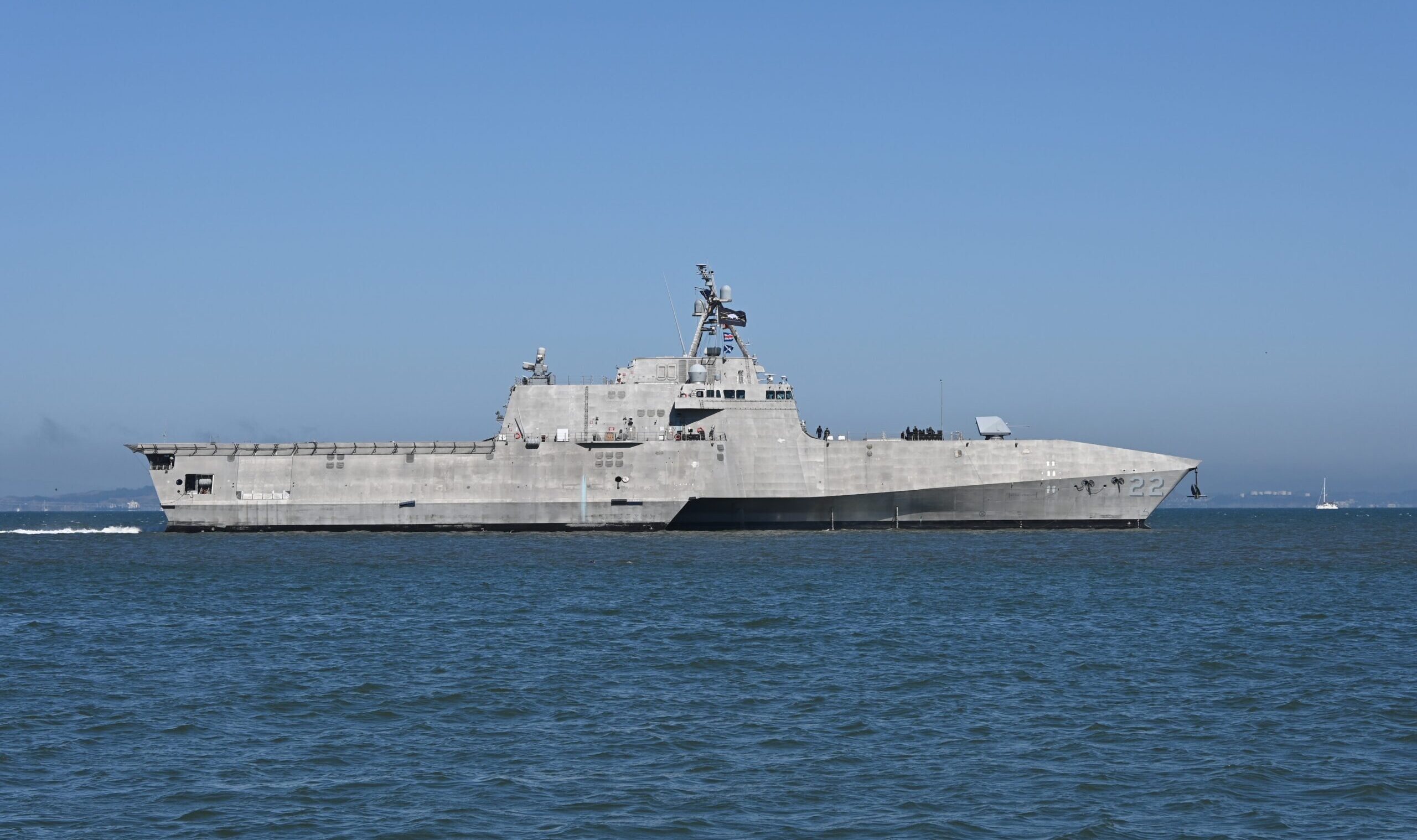Why Is the Military–Industrial Complex So Bad at Making Things?
God knows we give it enough money. The post Why Is the Military–Industrial Complex So Bad at Making Things? appeared first on The American Conservative.

Why Is the Military–Industrial Complex So Bad at Making Things?
God knows we give it enough money.

It is beginning to look as if the immortal Trump returns to Olympus for a revival tour and the merely terrestrial Harris descends to the Elysium of yesteryear’s possibilities—the Harvard Kennedy School of Politics, the 92nd Street Y, and the rest of the Chautauqua circuit for people with master’s degrees. That’s fine, as far as it goes. The question is what to do with all that awesome power at the top of the heap. It’s time to start planning.
The American Conservative’s own Curt Mills speculated last week on what the high-level staffing for Trump Redux might entail. He favors (with plenty of good reason—read the whole thing!) Sen. Tom Cotton (R-AK) to helm the Department of Defense and Elbridge Colby at the National Security Council. If those appointments come to pass, there will be some grousing from the dovish elements in the coalition: Cotton has been an enthusiastic cheerleader for the meatgrinder in Ukraine, and Colby’s tough-on-China stance countenances armed beef with a nuclear power over a very far away island in the Pacific. (Granted, Colby has been tempering his position publicly because of pressing practicalities—more on this anon.)
It is worth bearing in mind that the president is the commander in chief, not the secretary of defense or the national security advisor, not to mention Congress’s notional supremacy in the realm of declaring war. Cotton and Colby both share a significant virtue—a clear-eyed assessment of the U.S. military’s sorry and very expensive material conditions.
It’s worth going through a parade of the more recent hits. Connoisseurs will remember the Gaza pier disaster. A contributor to that debacle was the fact that the Army’s watercraft support—tugboats and the like—is at low ebb, as detailed in a recent GAO report: “The fully mission capable rate for watercraft has steadily declined, from 75 percent in 2020 to less than 40 percent thus far in 2024.” (Fairness demands the observation that this degradation dates to the first Trump administration, when Secretary of Defense Mark Esper attempted to draw down Army watercraft support to nothing, only to reverse course mere months later.) This sorry state of affairs means the Army relies disproportionately on the Navy for logistical support. As recent events have painfully disclosed, the Navy’s logistical arm isn’t all that it should be, either—a potent brew for combined-service catastrophes.
While the demand side of the equation—the national defense apparatus—deserves its share of blame, an underlying problem is the shoddiness of the supply side. We have written at length about the dysfunction of the American shipbuilding industry. The doyens of the armed forces can demand whatever they want, and sometimes do, but that doesn’t mean that the engineers and builders are going to deliver it. The ongoing saga of the Constellation-class frigate, a project that, per the GAO, is at “a standstill,” is but one instructive example.
Shipbuilding is an acute case, but the military–industrial complex isn’t covering itself with glory in other arenas, either. Most spectacularly, the F-35 project continues to be an embarrassment of headline riches. In another recent assessment, the GAO reported that, on top of the usual cost overages, the F-35 line has been missing its readiness targets for, oh, six years or so. In a bit of “do something” face-saving, the responsible Air Force general has announced his intention to get the mission-capable numbers up and declared a “War on Readiness”—not a very comforting phrase, given the American history with wars on abstract nouns. (And shouldn’t it be a war for readiness?)
This is not good; in fact, it’s bad. Let’s leaven this gloomy stuff with some heartwarming news, courtesy of the Wall Street Journal: Some college kids beat Boeing in a competition for anti-drone weapons prototypes. Boeing came in with a slick laser-shooting gadget, while the youths built (basically) some really big amps and knocked the vehicles for a loop with ultrasonic waves. One of these is woefully expensive and complicated; the other is not. Nor is this a unique instance. The Ukraine war has seen all kinds of rapid developments in drone warfare from cottage shops and relative newcomers like Anduril and Turkey’s Bayraktar.
We wish them well. A taxpaying citizen would not be amiss, though, in asking why the outrageously subsidized military–industrial titans of America aren’t cranking out such gee-whiz solutions to battlefield problems on a daily basis. They can hire whomever they want and have practically limitless resources. What is the defense industry good for?
Scoring and defending contracts is one answer. A recent profile of Anduril’s Palmer Luckey in Tablet emphasized the outsized funds the Big Five defense contractors spend on the contracting side of the business, as opposed to R&D and production. This is downstream from the legendary Clinton-era Last Supper, when the defense apparatus encouraged post–Cold War consolidation of the defense industry. This consolidation collided with the massive cash infusion from the Global War on Terror (remember what we said about wars on abstract nouns?), and the result was a frenzy of executive-branch rulemaking on the contracting process, just to keep all these disproportionately powerful market players honest. Materiel costs skyrocketed, and much of the money is going toward the lawyers and their ilk who can navigate the Federal Acquisition Regulation (FAR) and the Defense Federal Acquisition Regulation Supplement (DFARS).
A concrete, achievable goal for Cotton, Colby, and the rest of the Trump II gang is the reform of the federal acquisitions process. It is a tall order, and not a particularly exciting one, but it presents certain advantages. Rewriting FAR and DFARS does not depend on Congressional approval (who knows what the legislature is going to look like in January 2025), it will save a great deal of money, and—a distant third concern, of course—it will actually create the conditions for improving the material readiness of the American armed forces.
Fostering competition isn’t a singular answer; the advances of the American Century were in large part produced at state-subsidized behemoths like Bell Labs, RCA, Westinghouse, Texas Instruments, IBM. R&D funding is needed; David Goldman has written eloquently in these pages about how the government might go about doing it. But acquisitions reform will free up the capital that goes to paper-pushing and, perhaps, encourage the Big Five to spend it on building things instead. Perhaps the embarrassing and, worse, hugely expensive debacles will be less frequent, or at least less expensive.
The post Why Is the Military–Industrial Complex So Bad at Making Things? appeared first on The American Conservative.
What's Your Reaction?















